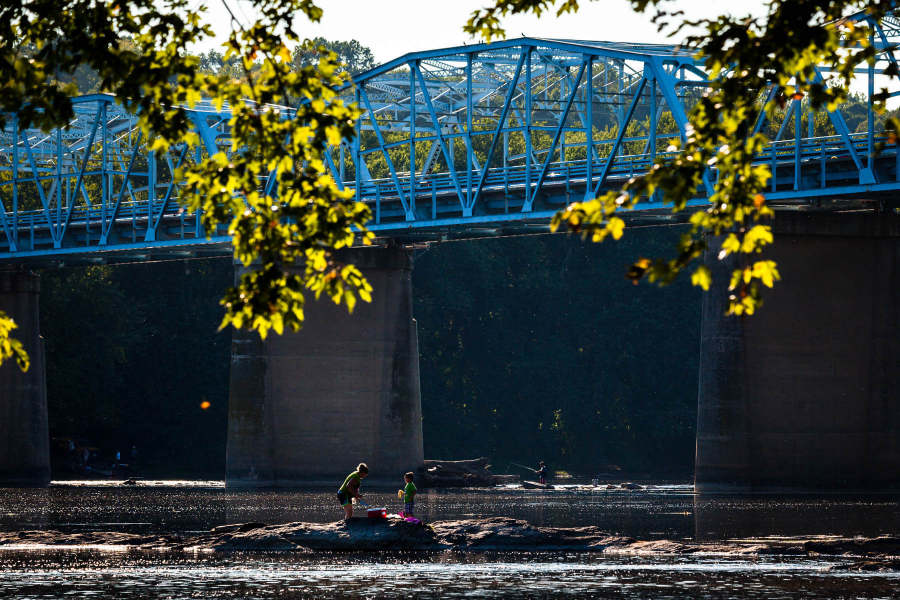Potomac River earns “B” on latest report card
Annual State of the Nation’s River report highlights the waterway’s turnaround over the past decade

The health of the Potomac River continues to improve, as the Potomac Conservancy gave the waterway a grade of “B” in its latest report card, up from a “B-” in 2016 and a “D” less than a decade ago.
Named the most endangered river in America in 2012, the Potomac River has seen a comeback due in part to declining pollution, returning wildlife and protected land. Pollutants such as nutrients and sediment continue to decline, while native wildlife like shad and bald eagles are returning. At the same time, more forest and farmland is being protected in the river’s headwaters. While the river’s health increases, so too does its popularity with the public, thanks in part to new places to access and enjoy the water.
“Improvements in wastewater treatment plants, reductions in non-point source pollution [runoff and sediment], and other upgrades have undoubtedly benefited bass and many other species in the Potomac,” said John Odenkirk, a biologist with the Virginia Department of Inland Game Fisheries. “The local fish community is in good health—especially given its proximity to major urban areas.”
However, problems continue to plague the Potomac. Polluted stormwater runoff continues to increase and is the fastest growing source of pollution in the river. Invasive species like blue and flathead catfish are invading local waters and pose a threat to native fish. And tree plantings have declined, slowing the recovery of the river.
“The Potomac River is making a comeback and is on its way to joining the Charles, Willamette and other urban rivers that have made remarkable recoveries in recent years,” said Potomac Conservancy President Hedrick Belin. “But that progress is fragile. We’ve reached a critical turning point for the river, and we can’t backslide now. We must strengthen—not weaken—water protections so fishermen can eat their catch, children can safely swim and we can drink water without worry.”

Comments
But polluted urban and suburban runoff continues to increase, according to the report. It is the only source of pollution still growing in the Potomac and the Chesapeake Bay, as more of the watershed is developed and its population grows.
I live along the Potomac near Harpers Ferry. I regularly kayak across the river to run on the C & O Canal tow-path. I find the conclusion the river is improving hard to swallow. Many of the riverside homes have septic systems that are very old and rarely, if ever, pumped. Property owners clear trees, with the exception of a few mature sycamores, down to the waterline and every heavy rain brings a new layer of rubbish, some generated by the fishermen/woman and boaters one would think would most recognize the damage they are doing. Local "outfitters" exploit the river during the warmer months by dumping thousands of "whitewater" tubers into some of the most sensitive stretches of the river (after they have trampled the river bank and discarded candy/food wrappers and beverage containers along the shore). Have years of Alice Ferguson Foundation clean-ups made a difference? I doubt it. Municipal treatment facilities are fine when they work, but too often they don't. If they are new today they will be less so tomorrow. Can they remove the chemicals used in drugs, healthcare products and cleaning aids? If Mr. Belin is interested in seeing some of the less Panglossian sides of the Potomac send me an e-mail.
Thank you!
Your comment has been received. Before it can be published, the comment will be reviewed by our team to ensure it adheres with our rules of engagement.
Back to recent stories